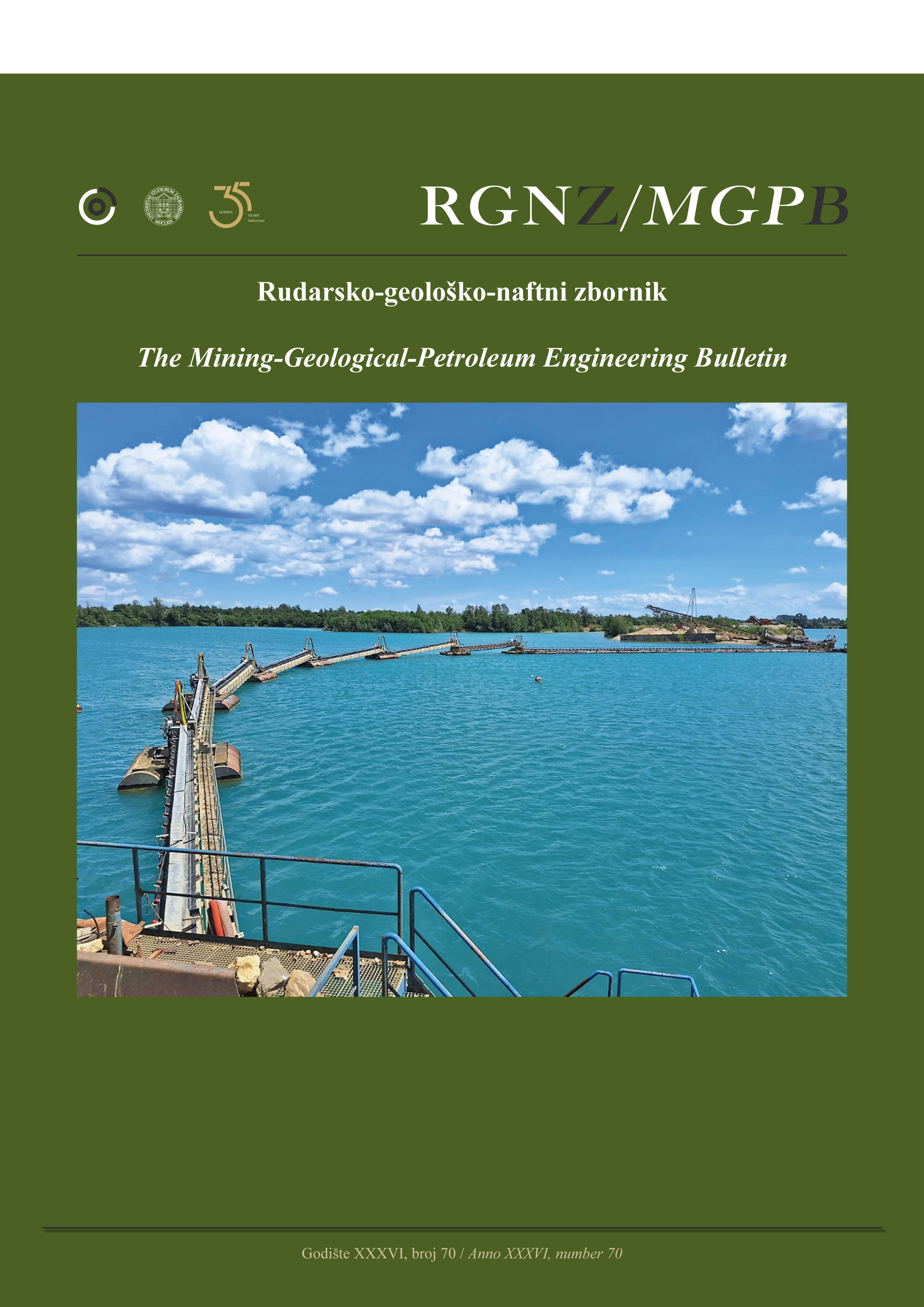Insight into rock thermal conductivities in the North Croatian Basin through in situ measurements
DOI:
https://doi.org/10.17794/rgn.2024.4.1Keywords:
thermal conductivity of rock, single-needle method, North Croatian Basin, sedimentary rocksAbstract
The thermal conductivity of rocks represents one of the significant variables when investigating geothermal potential of an area on a local scale as well as regionally when performing basin analysis with the aim of estimating hydrocarbon potential. While steady-state methods of measuring thermal conductivity are presumed to yield more reliable results, transient methods allow for in situ measurements, thereby considerably simplifying and reducing measurement costs. This study was performed with the goal to expand the understanding of thermal conductivity of rocks typical for the North Croatian Basin (NCB) infill, as well as the underlying basement rocks. The measured values reveal distinct ranges across various lithologies. The thermal conductivity values measured in crystalline rocks are quite consistent, showing narrow ranges of values for each lithotype: for granite the measured values are between 2.317 and 2.486 W m-1 K-1, the value range for gneiss is between 3.332 and 3.565 W m-1 K-1 and the thermal conductivity of amphibolite is in the range between 1.549 and 1.623 W m-1 K-1. In contrast, the thermal conductivity values of sedimentary rocks vary within broader ranges – the values in sandstones range between 1.778 and 2.433 W m-1 K-1, for marlstones the registered range is between 0.917 and 2.323 W m-1 K-1, the values measured in shales range between 0.894 and 2.304 W m-1 K-1 and biocalcarenites show values of thermal conductivity between 0.990 and 2.023 W m-1 K-1. The greater variability in values measured for sedimentary rocks is attributed to the variability in porosity and fluid saturation, as well as the greater variability of mineral composition. Further research is needed to determine which factor has the greatest influence on the variability of thermal conductivity values, i.e. to establish to which extent each of the factors contributes to the measured values.
Downloads
Published
How to Cite
Issue
Section
License
Copyright (c) 2024 Iva Kolenković Močilac, Marko Cvetković, David Rukavina, Josipa Kapuralić, Ana Brcković, Bruno Saftić, Ivan Cindrić, Josipa Babić

This work is licensed under a Creative Commons Attribution 4.0 International License.
Creative Commons-BY
Authors who publish with this journal agree to the following terms:
In agreeing this form, you certify that:
- You read the ethical codex of the RGN zbornik available at journal web.
- You submitted work is your original work, and has not previously been published and does not include any form of plagiarism.
- You own copyright in the submitted work, and are therefore permitted to assign the licence to publish to RGN zbornik.
- Your submitted work contains no violation of any existing copyright or other third party right or any material of an obscene, libellous or otherwise unlawful nature.
- You have obtained permission for and acknowledged the source of any illustrations, diagrams or other material included in the work of which you are not the copyright owner.
- You have taken due care to ensure the accuracy of the work, and that, to the best of your knowledge, there are no false statements made within it.
- All co-authors of this submitted work are aware of, and in agreement with, the terms of this licence and that the submitted manuscript has been approved by these authors.
Publication licence
You retain copyright in your submitted work, according to journal license policy (CC-BY). By signing this form you agree that RGN zbornik may publish it under the publication licence. In summary the licence allows the following:
Anyone is free:
- To copy, distribute, display, and perform the work.
- To make derivative works.
Under the following conditions:
- The original author must always be given credit.
- The work may not be used for commercial purposes.
- If the work is altered, transformed, or built upon, the resulting work may only be distributed under a licence identical to this one.
Exceptions to the licence
In addition to publishing the work printed under the above licence, RGN zbornik will also enable the work to be visible online.
The journal editorial can change the licence rules anytime but it cannot retroactively restrict author(s) rights.


